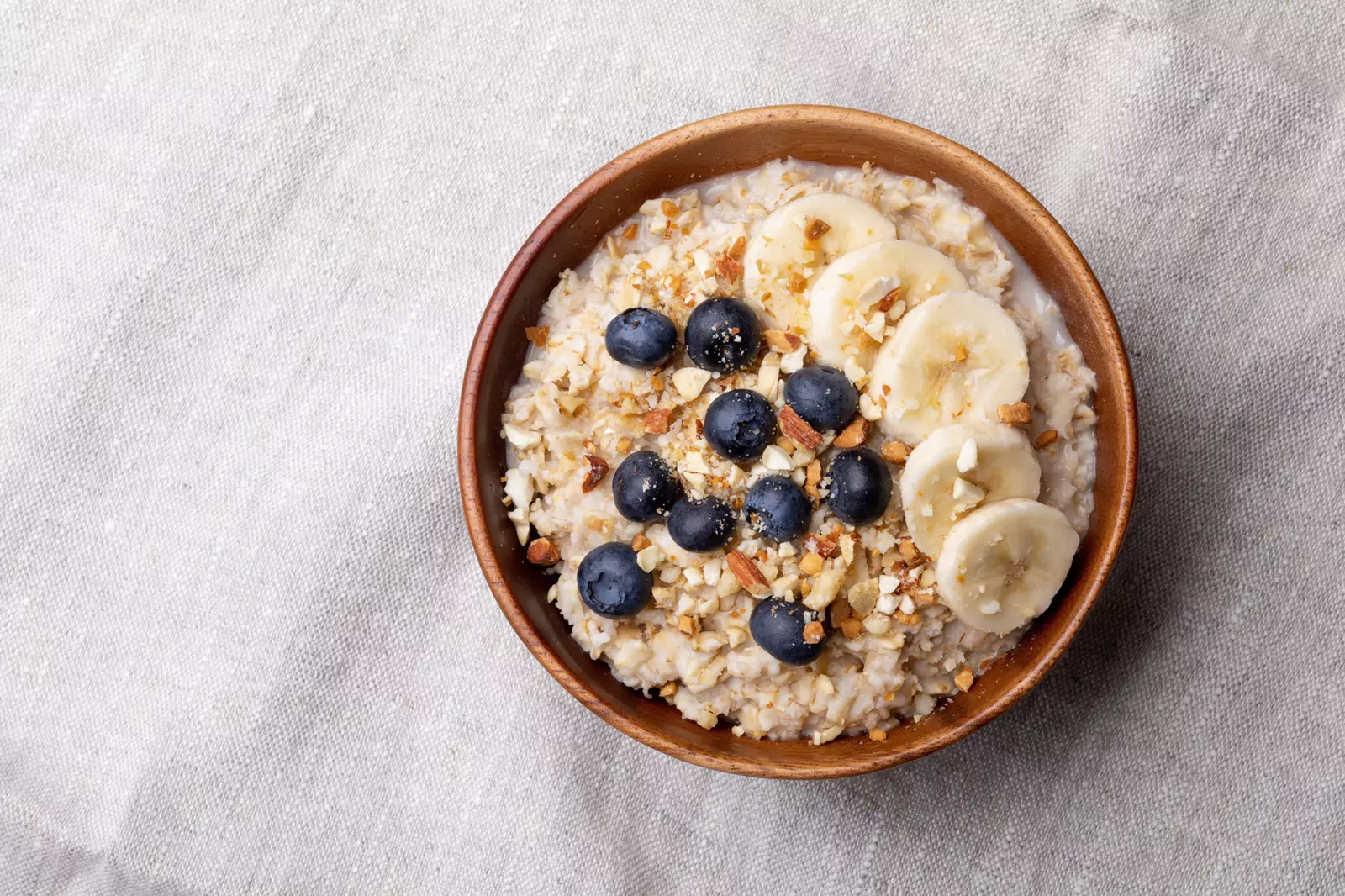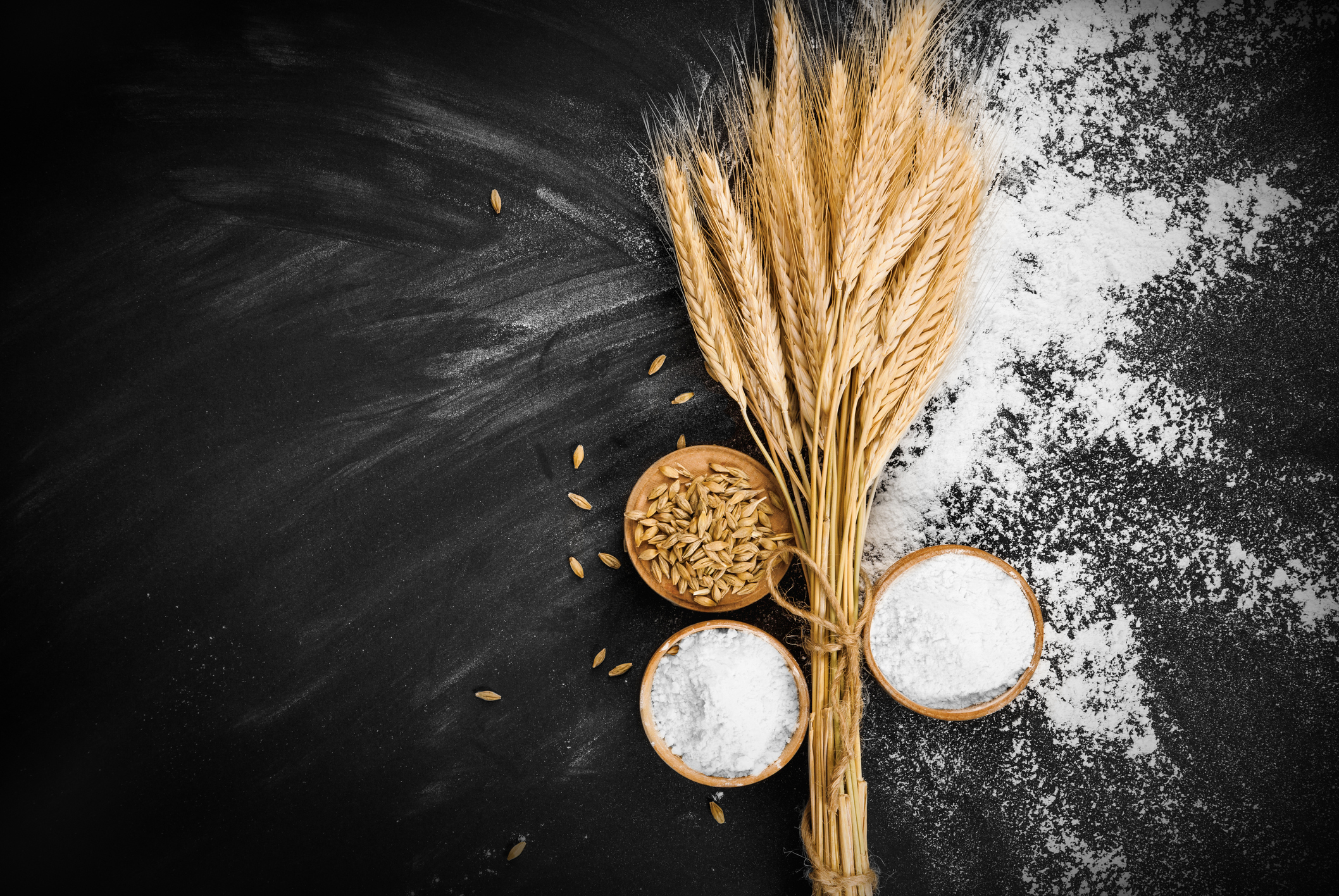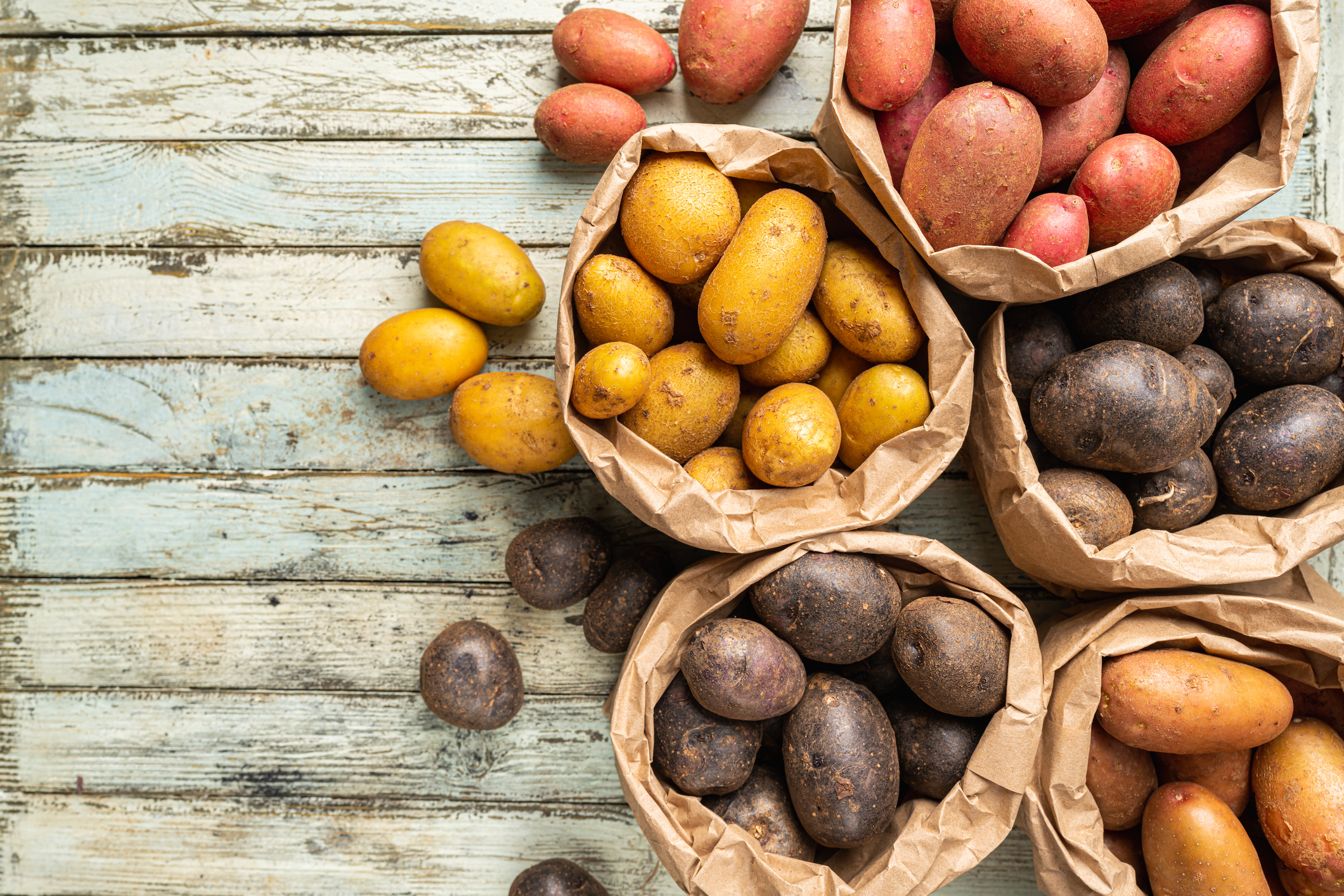






Grits vs Oatmeal for Diabetics: Which is the Better Choice?


Table of Contents
- The Basics of Grits and Oatmeal
- Glycemic Index of Grits vs Oatmeal
- Vitamins and Minerals
- Impact on Blood Sugar Levels
- How Oatmeal Affects Blood Sugar
- SugarMD Super Berberine Supplement
- Weight Loss Considerations
- Can Oatmeal Help You Lose Weight?
- Which is More Filling?
- Exercise and Diet
- Culinary Versatility
- Cooking with Oatmeal
- Meal Prepping Tips
- Pairing with Other Foods
- Cost and Availability
- Price Comparison
- Seasonal Availability
- Cultural Significance
- Grits in Southern Cuisine
- Oatmeal in Various Cultures
- Festivals and Traditions
- Modern Trends
- Conclusion
- About The Author
Ah, the age-old breakfast debate: grits or oatmeal? Particularly for diabetics, choosing between these two comforting morning dishes is more than a matter of taste—it's a vital health decision. In this comprehensive guide, we delve into the complexities of "grits vs oatmeal for diabetics," aiming to help you make an informed decision that aligns with both your dietary needs and lifestyle preferences.
Breakfast is often hailed as the most crucial meal of the day, a notion that takes on greater significance for individuals with diabetes. The foods you consume during this first meal can set the stage for your blood sugar levels for the rest of the day. So, should you opt for grits or oatmeal? While both boast dedicated fan bases and cultural significance, one might have a slight edge over the other when it comes to diabetes management.
We'll cover everything from the glycemic index of grits to the fiber content in oatmeal. We'll also examine how each option impacts weight loss, blood sugar control, and overall wellness. Whether you're a type 2 diabetic focused on blood sugar management or someone aiming to lose weight while controlling diabetes, this article is your go-to resource. So, let's settle this breakfast debate once and for all!
The Basics of Grits and Oatmeal
Grits originated in Native American communities and have become a staple in Southern cuisine. They're made from a specific type of corn called hominy, which is treated with an alkali in a process known as nixtamalization. After drying, the corn is ground into various textures, including instant grits and stone-ground grits. Grits are an essential part of Southern culture, commonly enjoyed with butter, cheese, or even shrimp.
In contrast, oatmeal traces its origins to colder climates like Scotland and Scandinavia. It comes from oats that have been either rolled or cut, resulting in different types such as rolled oats and steel-cut oats. Nutritionally, oatmeal surpasses grits in both fiber and protein content, making it a top choice for health-conscious individuals. Toppings for oatmeal can range from fresh fruits to nuts or a touch of honey.
Glycemic Index of Grits vs Oatmeal
Turning our attention to numbers, the glycemic index (GI) serves as an essential ranking system for carbohydrates based on their impact on blood sugar levels. Foods with a high GI can trigger rapid spikes in blood sugar, a significant concern for diabetics. Grits exhibit a higher glycemic index compared to oatmeal.
Consequently, they can lead to more abrupt blood sugar increases, making them less suitable for type 2 diabetics focused on maintaining stable blood sugar levels. On the other hand, oatmeal's lower GI offers a more gradual release of sugar into the bloodstream, making it a more favorable option for blood sugar management.
Vitamins and Minerals
Grits and oatmeal both provide a plethora of nutrients but excel in different categories. Grits are a good source of certain B-vitamins, iron, and magnesium, which contribute to energy production and muscle function. However, these are often added back during processing.
Oatmeal naturally contains a broader range of vitamins and minerals, including manganese, phosphorus, and zinc. It's also high in antioxidants that can combat inflammation and boost heart health. These nutrients offer multiple health benefits, ranging from improved immune function to enhanced skin and bone health.
Impact on Blood Sugar Levels
Grits present a bit of a dilemma when it comes to blood sugar. Yes, they're delicious and versatile, but their higher glycemic index makes them less than ideal for individuals with type 2 diabetes. Foods with a high glycemic index can cause quick spikes in blood sugar, posing long-term risks like nerve damage and cardiovascular problems.
While grits do offer some nutrients, they lack sufficient fiber to slow down sugar absorption into the bloodstream. If you're either a type 2 diabetic or simply mindful of your blood sugar levels, it may be wise to limit your consumption of grits or opt for whole-grain versions with a somewhat lower glycemic index.
How Oatmeal Affects Blood Sugar
In contrast, oatmeal offers a more favorable profile for managing blood sugar. Its lower glycemic index ensures a slower, more controlled release of sugar into the bloodstream, which is particularly beneficial for maintaining stable blood sugar levels.
This advantage is largely due to oatmeal's higher fiber content, which delays the digestive process and consequently the rate of sugar absorption. Additionally, oatmeal surpasses grits in both fiber and protein content, making it a more balanced choice for diabetics. If managing blood sugar is a priority for you, oatmeal stands out as a superior option, providing both taste and health benefits, especially for those with diabetes.
SugarMD Super Berberine Supplement
Lastly, allow me to introduce a game-changing addition: SugarMD Super Berberine. This supplement aims to support healthy glucose metabolism and is a potent combination of dihydroberberine and 100% pure Ceylon cinnamon. Why is this significant? Berberine is renowned for its ability to lower blood sugar by enhancing insulin sensitivity, a factor often compromised in diabetics.
Ceylon cinnamon contributes anti-inflammatory properties and can also help in blood sugar regulation. Therefore, regardless of whether you lean toward grits or oatmeal, incorporating SugarMD Super Berberine into your regimen can offer an extra level of blood sugar control. Safe for long-term use, this supplement can be an invaluable component of a comprehensive diabetes management plan.

Weight Loss Considerations
While grits may not be the go-to option for dieters, they do have some redeeming qualities that make them worth considering in a weight-loss plan. One such quality is the presence of healthy fats, which can provide sustained energy and curb hunger.
However, portion control is crucial because grits are calorie-dense, particularly when toppings like cheese or butter are added. If weight loss is your goal and you're contemplating incorporating grits into your diet, moderation is essential. Choose smaller portions and be mindful of what you add to your bowl.
Can Oatmeal Help You Lose Weight?
Oatmeal, in contrast, enjoys a reputation as a weight-loss ally. The secret to its effectiveness lies in its high fiber content. Fiber not only aids in digestion but also promotes feelings of fullness, potentially leading to fewer calories consumed throughout the day.
Furthermore, oatmeal offers a balanced nutritional profile, featuring a good mix of carbohydrates, protein, and healthy fats. This makes oatmeal a well-rounded choice for those aiming to lose weight while keeping nutritional balance in check.
Which is More Filling?
When the focus is on satiety, oatmeal clearly wins. Its higher fiber content ensures a lasting feeling of fullness, which can help you avoid unnecessary snacking. Grits, while tasty, don't offer the same fiber benefit and may leave you feeling hungry sooner, increasing the likelihood of reaching for less-than-healthy snacks. If controlling your appetite is part of your weight-loss strategy, oatmeal emerges as the more satisfying option.
Exercise and Diet
Remember, diet is only one part of the weight-loss equation; exercise is the other crucial component. Physical activity plays an indispensable role in burning calories, boosting metabolism, and building muscle. No matter your breakfast choice—be it grits or oatmeal—neither will serve as a weight-loss panacea in the absence of regular physical activity.
A balanced approach, combining a thoughtful diet with consistent exercise, remains the most effective pathway to achieving and sustaining weight loss. Therefore, in addition to focusing on your dietary choices, make sure to incorporate regular physical activity into your routine.
Culinary Versatility
Grits offer a world of culinary possibilities. Whether you're in the mood for something hearty like "Shrimp and Grits" or craving comfort with "Cheesy Grits," there's something for everyone. Even breakfast can be elevated with "Sweet Grits," where a drizzle of honey or maple syrup adds a touch of sweetness.
If you're looking for a different texture, try chilling cooked grits, slicing them, and pan-frying for a delicious contrast between a crispy exterior and a soft interior. With such versatility, grits prove themselves to be a fantastic option for various meals and occasions.
Cooking with Oatmeal
Oatmeal serves as a wonderful culinary base that accommodates both sweet and savory flavors. For those who prefer classic combinations, "Apple Cinnamon Oatmeal" is a sure hit. If protein is what you seek, "Overnight Oats" made with Greek yogurt and chia seeds offer a nourishing start to your day. For those keen on experimenting, a bowl of "Savory Oatmeal" adorned with sautéed veggies and a poached egg can be a delightful surprise. Don't overlook baked oatmeal options either—they can range from fruity to chocolaty, depending on your mood and preferences.
Meal Prepping Tips
Both grits and oatmeal are excellent candidates for meal prep, offering a convenient solution for busy lives. Cook a large batch of grits and divide it into individual portions for refrigeration. When it's time to eat, a splash of milk and a quick reheat will restore its creamy texture.
With oatmeal, "Overnight Oats" are a popular meal-prep choice. Simply combine rolled oats with milk and your favorite add-ins, and let the mixture sit in the refrigerator overnight. Come morning, a nutritious breakfast is ready and waiting for you.
Pairing with Other Foods
Creating a balanced meal involves more than just a bowl of grits or oatmeal; it's about what you pair with it. For grits, think about adding lean proteins like grilled chicken or fish to round out the meal. A side of steamed veggies can add both color and nutrients. When it comes to oatmeal, fresh fruits like berries or slices of banana add natural sweetness and vital nutrients.
For a dose of healthy fats, consider adding nuts or seeds. By thoughtfully pairing these grains with other foods, you're well on your way to creating not just a flavorful meal but a nutritionally balanced one as well.
Cost and Availability
Price Comparison
When budgeting for your grocery list, both grits and oatmeal present options that can cater to varying financial constraints. Basic, instant varieties of grits can be quite economical, generally ranging from $3 to $5 for a box that can serve multiple meals. On the other hand, specialty stone-ground or gourmet varieties may set you back up to $8 for a similar amount.
Oatmeal follows a similar pattern. Instant oats are usually on the lower end of the spectrum, priced between $2 to $4 for a week's worth of servings. If you're inclined to opt for specialty varieties like organic, steel-cut, or gluten-free oats, the price can go up to around $5 to $9 per package. Which option is more economical ultimately hinges on your preferences. If you're satisfied with basic, instant versions, both grits and oatmeal are fairly wallet-friendly. If you prefer organic or specialty types, you may find oatmeal to be a tad more expensive.
Seasonal Availability
Regardless of the season, both grits and oatmeal are generally available year-round. Grits, which are made from corn, benefit from modern storage technologies that keep them on store shelves throughout the year. Corn is usually harvested from late spring to early fall, but that doesn't limit its availability in the form of grits. Similarly, oatmeal enjoys consistent year-round availability.
Oats are harvested late in the summer through early fall, but they are stored and processed to ensure they can be found in stores at all times. Whether you're looking for basic rolled oats or specialty steel-cut versions, you'll likely find them whenever you choose to shop.
Cultural Significance
Grits in Southern Cuisine
Grits are much more than just a food item in the American South; they are a symbol of regional identity and history. Originating from Native American traditions, grits were adopted by early settlers and have been an enduring staple ever since. Made from ground corn, a primary crop in the region, grits are versatile and can be enjoyed in a variety of meals, from breakfast to dinner. States like South Carolina and Georgia have even declared grits their official state food, underscoring their cultural significance.
Oatmeal in Various Cultures
Oatmeal, unlike grits, has carved out a niche for itself in various international cuisines. In Scotland, oatmeal is served as a salty porridge, while in Nordic countries, it's often enjoyed cold and mixed with fruits and nuts. Across the pond in North America, oatmeal usually leans sweet, seasoned with sugar, fruits, and spices. This adaptability has made oatmeal a global favorite, and each culture adds its unique flavor and preparation techniques.
Festivals and Traditions
Both grits and oatmeal are celebrated through festivals that highlight their cultural importance. The American South hosts the annual "World Grits Festival," a tribute to this cherished food. Events range from cooking competitions to grits-themed games, drawing attendees from various places.
Oatmeal is similarly celebrated through the "Golden Spurtle World Porridge Making Championship" in Scotland. This international event gathers oatmeal aficionados to showcase their culinary skills, revealing the versatile ways in which oats can be used.
Modern Trends
The 21st century has seen both grits and oatmeal adapt to modern culinary trends. No longer confined to traditional Southern kitchens, grits are making their way into fine dining establishments, often served with upscale ingredients like scallops and asparagus.
Oatmeal is keeping pace with cafes offering trendy "Oatmeal Smoothie Bowls" adorned with superfoods such as chia seeds and goji berries. The classic preparations are being revamped, making these ancient grains appealing to contemporary palates.
Conclusion
After delving deep into the world of Grits vs Oatmeal for Diabetics, especially in the context of diabetes, it's clear that each offers unique benefits. Your ultimate choice will depend on various factors, including your health objectives, lifestyle, and culinary preferences. If you're particularly focused on managing your blood sugar levels, oatmeal seems to be the superior choice, primarily due to its high fiber and protein content.
However, if you value versatility and a range of flavors, grits could be a great addition to your diet. For those looking to maintain steady glucose levels, supplements like SugarMD Super Berberine can be a useful addition, complementing either breakfast option. Managing diabetes or any long-term health condition isn't just about making one good choice; it's about making a series of good choices.
A balanced diet, regular exercise, and a comprehensive approach to well-being are crucial in this journey. Whether you lean toward grits or oatmeal, the most important thing is to relish your meals while remaining mindful of your overarching health goals. Here's to healthful eating!
About The Author
Meet Dr. Ahmet Ergin a highly skilled and dedicated endocrinologist with a passion for diabetes care. Dr. Ergin earned his medical degree with honors from Marmara University in Istanbul. He completed internal medicine residency and endocrinology fellowship at Cleveland Clinic.
Dr. Ergin is board-certified in Internal Medicine, Endocrinology, Diabetes, and Metabolism due to his vast medical expertise. He's a certified diabetes educator, author of "The Ultimate Diabetes Book," and founder of "the SugarMD YouTube channel."
Dr. Ergin offers exceptional diabetes care to his patients in Port Saint Lucie, FL, helping them manage effectively. Disclaimer: These statements have not been evaluated by the Food and Drug Administration. Information on this website isn’t intended to treat, cure or prevent any disease. Discuss with your doctor and do not self-treat.
Written By Dr. Ahmet Ergin
456 total articles
Meet Dr. Ahmet Ergin, a highly skilled and dedicated endocrinologist with a passion for diabetes care. Dr. Ergin earned his medical degree with honors from Marmara University in Istanbul. He completed internal medicine residency and endocrinology fellowship at Cleveland Clinic. Dr. Ergin is board-certified in Internal Medicine, Endocrinology, Diabetes, and Metabolism due to his vast medical expertise. He's a certified diabetes educator, author of “The Ultimate Diabetes Book,” and founder of “the SugarMD YouTube channel.” Dr. Ergin offers exceptional diabetes care to his patients in Port Saint Lucie, FL, helping them manage effectively. For a closer look into his insights and experiences, connect with Dr. Ahmet Ergin on LinkedIn, Instagram, and YouTube.”
Disclaimer: These statements have not been evaluated by the Food and Drug Administration. Information on this website isn't intended to treat, cure or prevent any disease. Discuss with your doctor and do not self-treat.
Products











